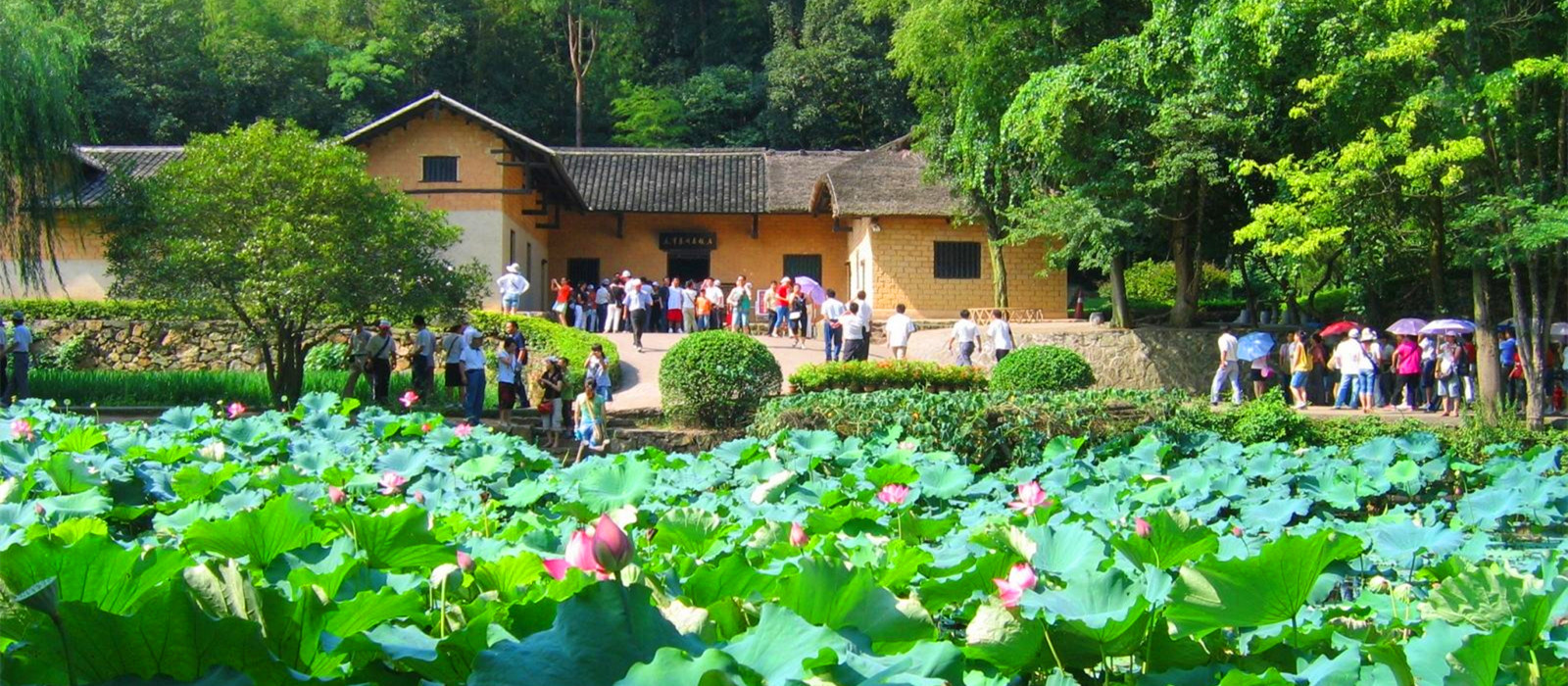008613762194311 | 008613762194311 tour-zhangjiajie@outlook.com
008613762194311 | 008613762194311 tour-zhangjiajie@outlook.com
Having given birth to Mao,the Shao Mountain Village listed as one of the four sacred cradles of the Chinese revolution. Since the founding of the New Chinese in 1949, it has received more than 30 million visitors from all over the world. People come here from every corner of the world to recall the eventful life of Mao as a countryside boy.
★ Fast Facts on Shaoshan Mountain Village
■ Chinese name: 韶山
■ Main Scenic Spots: The Former Residence of Chairman Mao, The square of Chairman Mao
■ Admission fee: Free
■ Suitable for: All ages
At the foot of a vivid hill stands the former residence of our leader Mao Zedong. A common cottage typical of South China, it is a simple structure with a single-eaved roof that is covered with small black tiles.
 Against the verdant woods, the naked walls built of tallow earthen bricks are rather eye-catching, a sure sign of Mao's humble birth. Through the front door we can enter the sitting room, where the family entertained guests. The table and the benches, all in the old style, are set as they were. To its right are 3 rooms for helping farmhands, and behind it is the kitchen, where the cooking utensils are well preserved. To its left are the former bedrooms of Mao, his parents and his brothers respectively, in which are hung photos and paintings portraying the family or Mao as a vigorous youth trying to persuade suffering villagers to participate in the revolution. Gaze at these pictures or the simple furniture, and we will be taken back almost a century, wondering how a common country boy was brought up to exert his great influence on the country and even the world. When we thougtfully walk out and have a stroll by the pond in front of the house, we feel as if we saw the would- be great man swimming under the canopy-like lotus leaves.
Against the verdant woods, the naked walls built of tallow earthen bricks are rather eye-catching, a sure sign of Mao's humble birth. Through the front door we can enter the sitting room, where the family entertained guests. The table and the benches, all in the old style, are set as they were. To its right are 3 rooms for helping farmhands, and behind it is the kitchen, where the cooking utensils are well preserved. To its left are the former bedrooms of Mao, his parents and his brothers respectively, in which are hung photos and paintings portraying the family or Mao as a vigorous youth trying to persuade suffering villagers to participate in the revolution. Gaze at these pictures or the simple furniture, and we will be taken back almost a century, wondering how a common country boy was brought up to exert his great influence on the country and even the world. When we thougtfully walk out and have a stroll by the pond in front of the house, we feel as if we saw the would- be great man swimming under the canopy-like lotus leaves.
It is in this cottage that Mao was born on Dec. 26,1893, at the age of eight, Mao began his schooling at a private school in the village. In the light of oil lamp the diligent pupil used to study late into the night, within six years, had read almost all the books available here. In 1910, he left the village for Xiangxiang to continue his education in a high school, and then for Changsha in the First Teachers' School of Hunan. In the radical social turmoil, Mao got acquainted with many revolutionary pioneers, who were to be his capable assistants. After the death of his parents in 1920, Mao persuaded his brothers to play an active role in the coming revolution. Between February and August 1925,Mao, with the help of his wife Yang Kaihui, set up over twenty night schools to eliminate illiteracy and spread revolutionary ideas among the local peasants. In January 1927, he returned to his hometown again to look into the peasants' movement, which laid a firm basis for his well-known political comment. Then he left his hometown only to return thirty-two years later.
Half a kilometer from the cottage is the central square of the whole tourist destination. In its southwest towers the copper statute of Mao in his fifties, which was erected on Dec. 26,1993 to commemorate the 100th anniversary of Mao's birth. To the east of the statue stands the Ancestral Hall of the Mao Family, which Mao and his first wife drew on as the site of their night schools. Beside the hall is Mao Zedong Museum, a large construction in the garden style. It houses 11 exhibition halls connected by pavilions, bridges or verandas. They present a systematic introduction to Mao's eventful life by thousands of pictures and relics.
Previous Page:Tianxin Pavilion
Next Page:Hengshan Mountain